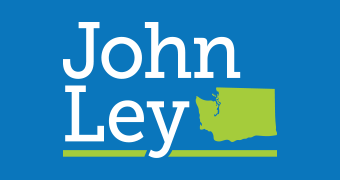In his latest video, John Ley discusses the recently completed SR 14 project, a transportation success story that has delivered on its promises. With the addition of new lanes, congestion has eased, and drivers now enjoy smoother, faster commutes. John Ley highlights the project as a model for other infrastructure investments, particularly the I-5 Interstate Bridge Replacement, where he argues that adding lanes could save billions and dramatically reduce congestion. The SR 14 project’s success proves that expanding roadway capacity can effectively combat congestion, unlike the current plans for I-5. John urges decision-makers to prioritize efficient solutions that save both time and taxpayer dollars.
Transcript
Good evening, members of the board.
I come before you today to say thank you to WASDOT. The SR 14 project is now essentially complete. One news report indicates the final cost of the project is $28 million, about $3 million over the expected cost. Initial results show that the traffic congestion people have been dealing with for years is now gone. Vehicle speeds are now fully back above the 50 mile an hour speed we desire. Traffic congestion has been eliminated because we added one lane eastbound and two lanes westbound.
This is exactly what the people hope for and want when it comes to spending their transportation dollars. Saving time and reducing traffic congestion is their top priority. But let us move forward and apply this lesson to the I-5 Interstate Bridge Replacement project.
For some strange reason, Greg Johnson says you can’t build your way out of traffic congestion. We just proved them wrong. As one of ten agencies with yes or no authority and oversight for the IBR, you should be demanding the project add multiple new vehicle lanes to improve freight mobility and save people time. Replacing an over congested three lane bridge with another three thru lane bridge is wrong, especially when the IBR zone data shows morning travel times will double by 2045.
Greg Johnson and his team are not even trying to address the people’s top priority. Their own surveys three and four years ago indicated 70% or more of the people wanted to save time and reduce traffic congestion. Yet after spending $7.5 billion and likely more, travel times will actually get worse.
Furthermore, travel times for seats and express buses will be 11 minutes longer after the project is complete than if we had done nothing and saved $7.5 billion. Has anyone here read the nearly 12,500 pages in the draft EIS? Buried in the data is the fact that the project is not green from a carbon emission standpoint. The project saves just 31 metric tons of CO2 per day. It will take over 41 years to recover just the construction CO2. The transit component actually adds CO2, whereas cars and trucks on the road show reduced carbon emissions.
Allocating additional lanes to the freeway and eliminating the $2 billion max light rail component would be cleaner from an environmental perspective. Plus, it would save $2 billion, including the need for tolling. More vehicles and freight haulers would move faster through the five mile corridor. If 54% of the surface were not allocated to transit, bikes, and pedestrians, we can save people time by adding new lanes. The SR 14 project just proved that.
Let’s build a project that saves time and reduces traffic congestion, just like SR 14 did. Thank you.

